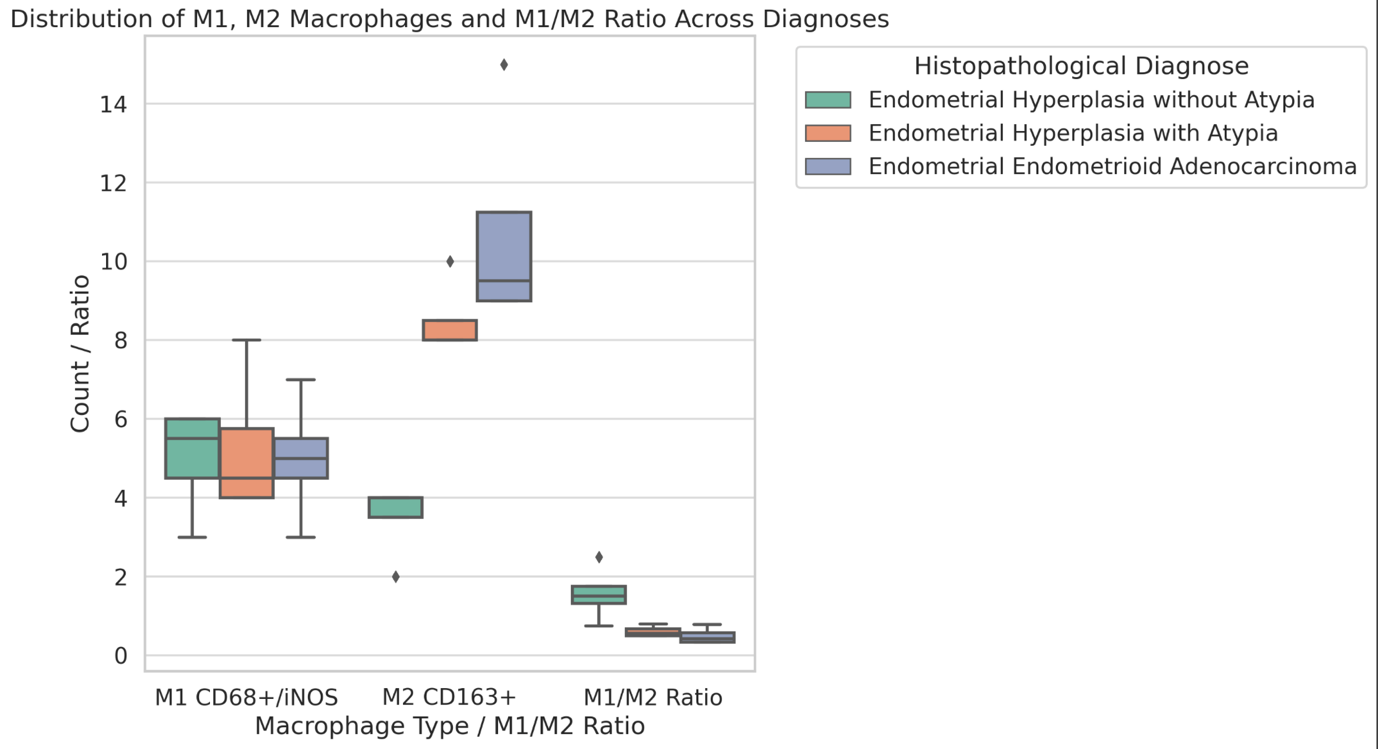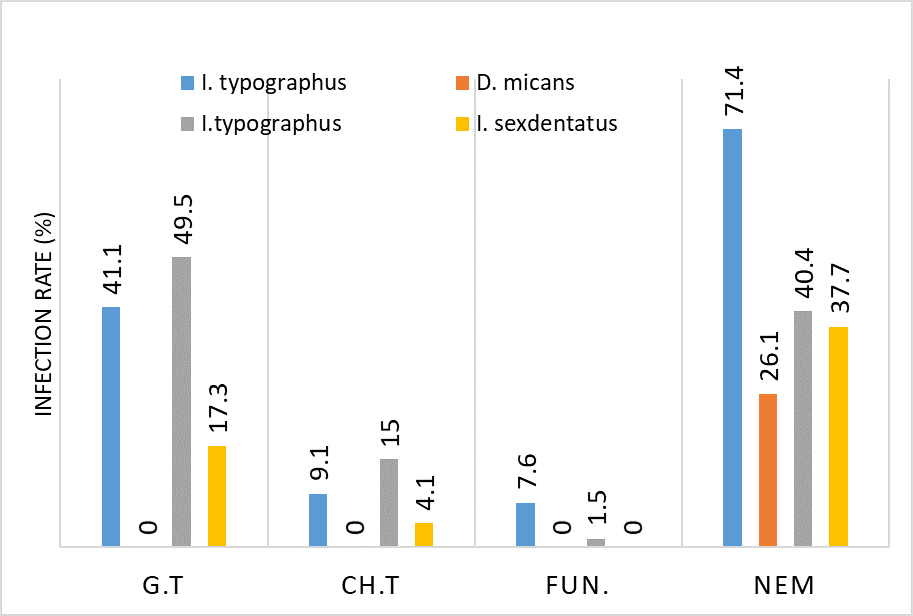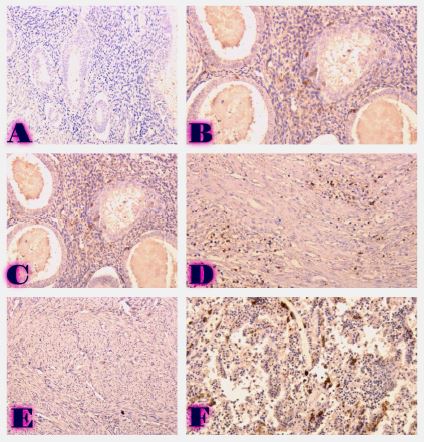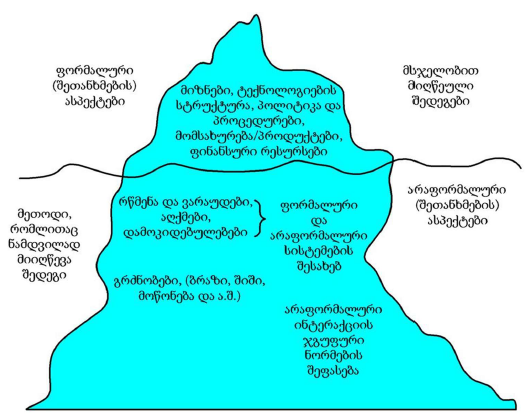Entomofauna associated with Oriental spruce (Picea orientalis L.) in the around subalpine forests of Goderdzi Pass
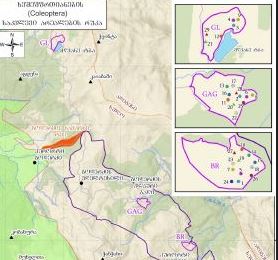
Downloads
The paper discusses the species diversity of certain beetles (Coleoptera: Scolytidae, Cerambycidae) and woodboring wasps (Hymenoptera: Siricidae) in the subalpine forests around the Goderdzi Pass in the Khulo Municipality of the Autonomous Republic of Adjara, Georgia, during the years 2023-2024. These species were found at altitudes ranging from 1850 to 2100 meters, associated with the Oriental Spruce (Picea orientalis L.). To identify new foci of entomofauna common on Picea orientalis, in the study area three permanent sampling plots were allocated: Green Lake at 2058 m above sea level, covering 13 ha; Goderdzi Alpine Garden at 1960 m above sea level-9.6 ha, and Beshumi Resort at 1900 m above sea level - 9 ha. The research employed methods such as route-based expeditions, quadrat sampling, insect trapping and identification. The systematic status of the insects was determined using the CABI digital library and the EPPO Global Database, with cross-referencing. To refine the distribution areas of the entomofauna, a Global Positioning System (GPS) was used. The study revealed that the entomofauna of the Picea orientalis within the 1850–2100-meter elevation range is represented by 2 orders (Coleoptera, Hymenoptera), 5 families (Scolytidae, Rhizophagidae, Cerambycidae, Ptinidae, Siricidae), and 8 genera (Ips, Dendroctonus, Rhizophagus, Tetropium, Rhagium, Ptinus, Prionus, Sirex), resulting in the identification of 14 species. Based on morphological research, their taxonomic classification was confirmed, and the bioecology and vertical distribution patterns of the species were studied. Among the identified species are significant pests of coniferous forests, such as Ips typographus, Ips sexdentatus, Ips acuminatus, Dendroctonus micans, as well as harmful entomophagous insects, including Rhizophagus dispar and Rhizophagus grandis. Ecologically point view, there are also "sanitizers" of the forest that help decompose organic matter and contribute to forest fertility, including Tetropium castaneum, Tetropium fuscum, Rhagium fasciculatum, Rhagium inquisitor, Prionus fur, Prionus coriarius, Sirex varipes, and Sirex sp.
Downloads
Metrics
Джавахишвили А.Н. Геоморфологические районы Грузинской ССР (Типы рельефа и районы их распространения). М.-Л.: изд-во АН СССР, 1974. 178 стр
ფაღავა ნ., ქამადაძე ც., ჭიჭილეიშვილი ხ. აჭარის /არ ლანდშაფტების ეკოლოგიური მდგომარეობა და მისი გეოკოლოგიური გაუმჯობესების ღონისძიებანი. // საერთაშორისო სამეცნიერო კონფერენცია „ეკოლოგიის თანამედროვე პრობლემები“ შრომები, ISSN 1512-1976, ტ. 7, თბილისი-თელავი, საქართველო, 26-28 სექტემბერი, 2020
Norman Myers, Russell A. Mittermeier, Cristina G. Mittermeier, Gustavo A. B. da Fonseca & Jennifer Kent. Biodiversity hotspots for conservation priorities // NATURE|VOL 403|24 FEBRUARY 2000
Updated list of officially adopted Emerald Network sites., Standing Committee, 42nd meeting, Strasbourg, 28 November - 2 December 2022
კურორტი ბეშუმის, გოდერძის უღელტეხილისა და შქერნალის განვითარების გენერალური გეგმის კონცეფციის სტრატეგიული გარემოსდაცვითი შეფასების სკოპინგის ანგარიში, 2023
ბოლქვაძე ზ., შაინიძე ო., ლომაძე მ., 1987
ვასაძე რეზო, ვასაძე ზეინაბ. აჭარის მუქწიწვიანი კორომების საერთო სანიტარული მდგომარეობის გაუარესების გამომწვევი მიზეზები და სატყეო სატაქსაციო მაჩვენებლის დინამიკა ტყის ტიპების მიხედვით. ბათუმი, 2024.
ბურჯანაძე მ., სუპატაშვილი ა., საქართველოს წიწვოვან ტყეებში გავრცელებული უმთავრესი ქერქიჭამიები, საქართველო, 2020
Schiff N. M., Goulet H. D. R. Smith C. Boudreault A. D Wilson, and B. E. Scheffler. Siricidae (Hymenoptera: Symphyta: Siricoidea) of the Western Hemisphere. Canadian Journal ofArthropod Identification 21: 1-305. 2012
Zehnder G., Overview of Monitoring and Identification Techniques for Insect Pests, 2020
Dobrovolsky B. В. Phenology of insects: Ucheb. пособие для ун-тов, ped. и с.-х. узов. - M.: Vysshaya Shkola, 1969, p 232. (in Russia)
LSAM. How to Make an Insect Collection. lsuinsects.org / DIY _I nsect _ Collection. pdf. http://lsuinsects.org› DIY_Insect_Collection
Бусарова Н. В., Негробов. О. П. Энтомология. Определитель семейств насекомых 2-е изд., пер. и доп. Учебное пособие для вузовб 2020, c.182.
Jacobson G.G., Beetle determinant Eur. parts of the USSR. Leningrad, 1931, p 454. (in Russia)
Соболев А.А., Шипинская У.С.. НАБЛЮДЕНИЯ ЗА ПОПУЛЯЦИЯМИ ВЕРШИННОГО КОРОЕДА И КОРОЕДА ТИПОГРАФА С ИСПОЛЬЗОВАНИЕМ ФЕРОМОННЫХ ЛОВУШЕК НА ТЕРРИТОРИИ ЕВРОПЕЙСКОЙ ЧАСТИ РОССИИ. Т. 24, № 3, С. 103–108. Баумана, 2020
Marcus R., Eaves D.M., Statistical and Computational Analysis of Bioassay Data. In: Bioassays of Entomopathogenic Microbes and Nematodes. Navon, Amos, Ascher, K. R. S. (Editor), CAB Intl, p 324, 2000
Copyright (c) 2025 Georgian Scientists

This work is licensed under a Creative Commons Attribution-NonCommercial-NoDerivatives 4.0 International License.

